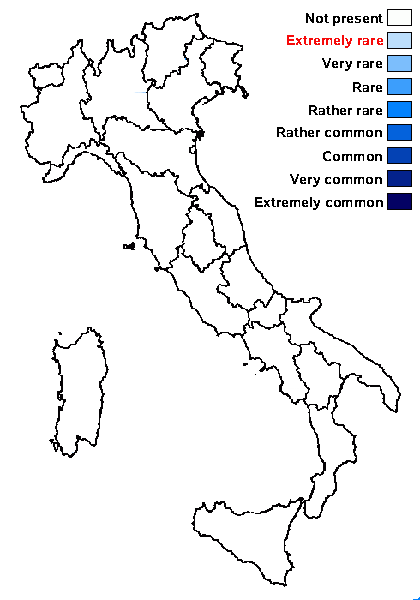Thelidium nigricans Zschacke
Magy. Bot. Lapok: 300, 1912
Synonyms:
Distribution:
Description: Thallus crustose, thinly episubstratic, not gelatinous when wet, 30-35 μm thick, black-brown, finely rimose. Cortex absent, but uppermost layer of thallus yellowish to brownish; black basal layer very thin and partially absent or reduced to isolated black patches. Perithecia black, 0.2-0.3(-0.4) mm across, at first immersed in the thallus, then half-projecting. Involucrellum reaching the base of the perithecium and sometimes connected with the black basal layer; exciple 190-230 μm in diam; hamathecium of up to 30 μm long periphyses, interascal filaments absent; hymenial gel I+ red (I+ blue at very low concentrations of I), K/I+ blue. Asci 8-spored, ellipsoid to clavate, I-, fissitunicate, the wall thickened above, with an ocular chamber, dehiscent by extrusion of a delicate rostrum, 70 x 30 μm. Ascospores 3-septate, hyaline, ellipsoid, (22-)29-38(-40) x (10-)11-13.5(-14.5) μm. Photobiont chlorococcoid, the cells 5-8 μm wide, mostly arranged in small clusters. Spot tests: K-, C-, KC-, P-, UV-. Chemistry: without lichen substances.Note: amphibious on siliceous rocks, very similar to Th. aethioboloides, molecular data are needed in order to clarify whether they are two genetically distinct species. Known from Switzerland, to be looked for in the Italian Alps.
Growth form: Crustose
Substrata: rocks
Photobiont: green algae other than Trentepohlia
Reproductive strategy: mainly sexual
Periodically submerged (e.g. in creeks)

Predictive model
Growth form: Crustose
Substrata: rocks
Photobiont: green algae other than Trentepohlia
Reproductive strategy: mainly sexual
Periodically submerged (e.g. in creeks)

Predictive model

